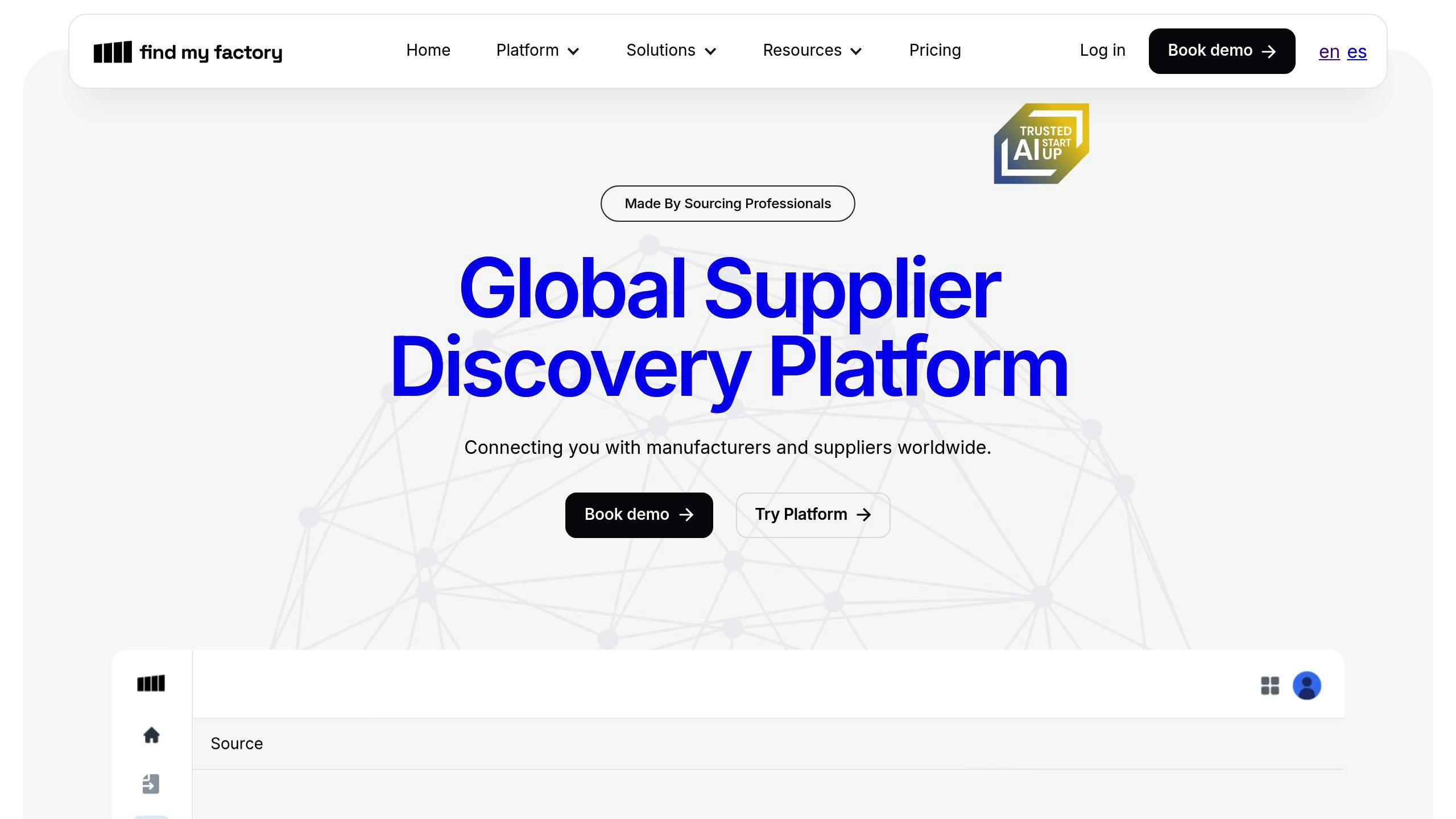Main Pages
AboutPricingSecurityCareerCustomersContactBlogFeatures
Monitor & EnrichDiscover & SourceRFI & EngageOur Socials
LinkedinLegal
Terms of UseMay 9, 2025
Explore the challenges and solutions of IoT data standardization in manufacturing to enhance efficiency and security.
Articles

IoT data standardization is critical for improving manufacturing efficiency, but it faces significant hurdles. These include the variety of IoT devices, challenges with legacy systems, and growing security concerns. Without standardization, manufacturers struggle with interoperability, higher costs, and isolated data. Here's a quick breakdown of the key points:
These steps help manufacturers unify systems, enhance security, and improve operations. Read on to learn how tools like edge computing and platforms like "Find My Factory" simplify these efforts.
Manufacturers face three main hurdles when it comes to standardizing IoT data: the variety of devices in use, the difficulty of integrating older systems, and the growing need for robust security. These issues have a direct impact on efficiency and efforts to modernize operations.
Factories today use a mix of devices that often rely on different protocols, making it hard to connect and integrate them. Without universal standards, devices from different vendors struggle to communicate, creating major interoperability problems.
This lack of compatibility leads to:
A major challenge for manufacturers is adding IoT capabilities to older equipment. Many factories still use machinery that was built before IoT became widespread, making integration a tough task.
Some common problems and their solutions include:
Tools like edge computing and intelligent gateways are essential for overcoming these issues. They allow older systems to work with newer IoT setups by converting outdated protocols into formats that are IoT-friendly [1]. However, putting these solutions in place can still be a complicated process.
On top of technical challenges, security concerns make standardization even harder. The interconnected nature of IoT systems creates new vulnerabilities, and manufacturers must also stay compliant with various regulations.
Some of the key issues include:
With so many devices linked together, the risk of cyberattacks grows. Manufacturers need strong security measures that don’t interfere with operations, adding another layer of complexity to standardization efforts.
Open standards play a key role in enabling smooth communication between various IoT devices and systems. Two widely adopted protocols are:
For instance, Toshiba applies these protocols in their Manufacturing IoT Data Collection Solution. Their system integrates multiple data sources using standardized messages to manage equipment operations, sensor data, and manufacturing processes, ensuring consistent communication across the factory floor [2].
IoT middleware acts as a translator, connecting different systems by converting data formats and enabling integration. Middleware solutions offer several benefits:
FeatureBenefitProtocol TranslationConverts data formats automaticallyReal-time ProcessingHandles immediate data transformationLegacy System IntegrationLinks older equipment with modern IoT toolsScalable ArchitectureAdapts to growing operational demands
These features help create a unified data environment, making collaboration easier.
Organizations like the Industrial Internet Consortium (IIC) and the Open Manufacturing Platform (OMP) are working to create shared frameworks that improve system compatibility. By pooling resources and expertise, these groups speed up the development of interoperable solutions.
To implement these standards effectively, manufacturers need to focus on:
Manufacturers face ongoing challenges with IoT data standardization, making AI-powered platforms an increasingly important part of supply chain management. These tools help unify diverse data sources and meet standardization needs, while also improving collaboration with suppliers.
AI platforms today come with features specifically designed to tackle IoT data standardization issues:
FeatureHow It Helps with IoT Data StandardizationData Format NormalizationConverts outputs from older systems into standardized formats, easing integration problemsProject CollaborationSimplifies data exchange between manufacturers and suppliers following consistent standardsPredictive AnalyticsDetects potential data mismatches and suggests ways to improve standardization
One example of such a platform is Find My Factory, which shows how AI can make these standardization efforts practical across supply chains.

Find My Factory is an AI-based sourcing platform built to simplify supplier discovery, improve supply chain efficiency, and promote collaboration. It includes tools like AI-boosted search, enriched supplier databases, and project collaboration features, all aimed at helping businesses make smarter, data-driven decisions.
For companies needing consistent IoT data across multiple suppliers, this platform provides advanced supplier management capabilities. Its AI-powered search tools allow manufacturers to find suppliers that meet specific IoT data standards and requirements.
To get the most out of AI tools for supply chain management, manufacturers should:
Aligning AI tools with existing IoT infrastructure and ensuring proper training are key steps for successful adoption.
Standardizing IoT data is a key driver for improving efficiency in manufacturing. Open standards and protocols such as MQTT and OPC UA are pivotal in addressing compatibility issues and ensuring systems work seamlessly together across operations [1].
To achieve this, manufacturers need to adopt a collaborative approach. Partnering with organizations like the Industrial Internet Consortium (IIC) and the Open Manufacturing Platform (OMP) can help establish and implement effective standardization practices [1].
Here are some core strategies to focus on:
AI-powered tools, such as Find My Factory, highlight how technology can simplify standardization efforts while improving supply chain flexibility. These platforms show how AI can close gaps in standardization and enhance overall operational efficiency.
Insights & Ideas